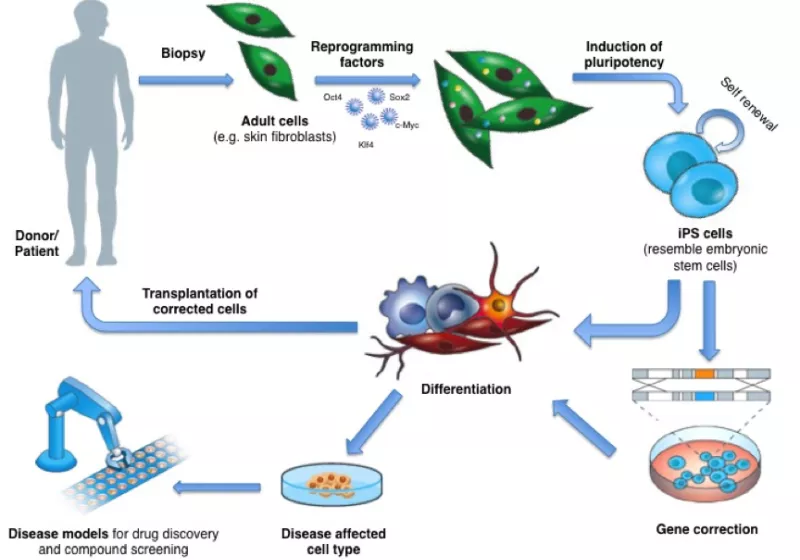Stroke is the second leading cause of death worldwide, and the major cause of disability in Europe. A stroke happens when the blood supply to part of the brain is severely reduced, often with severe effects on the body. The long-term effects depend on the extent of stroke and where it occurs. About one-third of stroke sufferers recover quite well, but most still experience some permanent effects, and some strokes cause severe disability. Could stem cells and gene editing techniques help?
The first studies aimed at developing cell replacement treatments for stroke were done using brain cells derived from a type of tumour called a teratocarcinoma. Researchers found that they could use stem cells from the teratocarcinoma to produce neurons (nerve cells of the brain) in the lab. They then transplanted these lab-grown neurons into the brains of rats after a stroke, and showed that the transplanted cells were able to integrate into the rats’ brains. This research led to a clinical trial in 2000 to assess the safety of human-teratocarcinoma-derived neurons transplanted into the brain of stroke patients. However, although this initial clinical study suggested that the transplanted cells survived and might even have had some benefits in a very small number of patients, a further study in 2005 failed to find any improvement in patients. The origin of these cells in a tumour, combined with the lack of improvement shown in patients has led researchers to focus on other possible stem cell sources.

